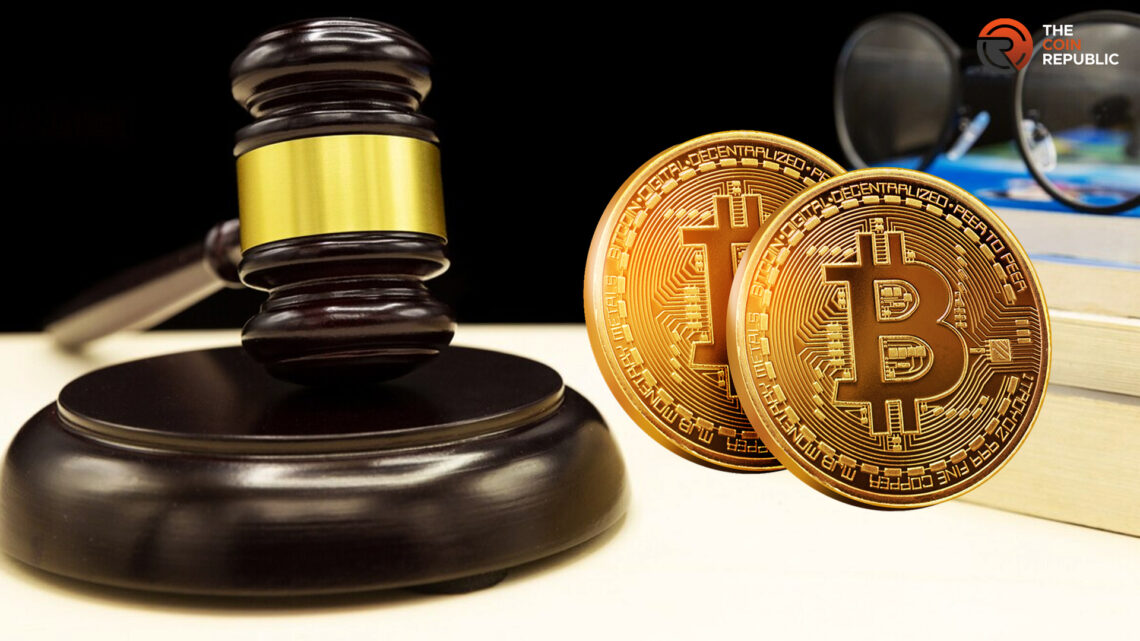- 1 Gresham’s law extends to the cryptocurrency space, where stable and volatile digital currencies are distinguished based on their utility into good and bad.
- 2 More stable cryptocurrencies are used for everyday transactions, and volatile cryptocurrencies are used as a store of value.
- 3 Users often categorize and hold cryptocurrencies as a hedge against inflation, aligning with the principle of good and bad money.
Gresham’s Law is an economic principle that states there are two types of money in circulation. The two types are segregated as good money and bad money. Individuals typically spend or trade the money they believe to be more valuable, hoarding or using the money they believe to be less valuable.
The following paragraphs in this article will discuss the history and development of Gresham’s law, its importance, and its implications for cryptocurrency.
Understanding Gresham’s Law
Gresham’s law states that bad money will drive out good money from circulation. Bad money then becomes a currency in the market that has equal or less value compared to its over-face value. From there, good money becomes of greater value or has the potential for more value.

The basis of Gresham’s law involves the concept of good money, which is a currency that is undervalued or more stable when it comes to internal value. The concept of bad money is money or currency that is overvalued or possibly loses value quickly.
History and Development of Gresham’s Law
Gresham’s Law explains a theory that Aristophanes first noted in the 5th century BC. However, in the 16th century, Sir Thomas Gresham was a proponent of the law and explained it to Queen Elizabeth.
Although Gresham did not originate the phenomenon, he was the one who made it popular
Gresham’s law was historically seen in several traditional currency systems, where abandoned or fake coins would be driven out of circulation and the more valuable, legal coins would come into existence.
It was believed that individuals would hold onto the higher intrinsic value currencies and spend the lower intrinsic value currencies.
This idea still remains relevant to the use of cryptocurrencies and their differing levels of stability and utility.
Workings of Gresham’s Law
In history, coins have been composed of precious metals, such as gold, which gave the coins their natural value. However, over the years, coin issuers would reduce the amount or percentage of precious metals used in their composition and attempt to implement them as full-value currency.
The newer coins with fewer precious metals would have less market value and would be traded at a discount, while the older full-value coins would retain more value.
Gresham’s Law in Cryptocurrency
When it comes to using cryptocurrencies, Gresham’s law holds that more volatile digital currencies are utilized for speculative investments, and more stable and well-established cryptocurrencies are used for everyday transactions. It reflects the principle of good money and bad money.
Some of the digital currencies are considered relatively stable, such as Bitcoin (BTC). Digital assets are considered similar to gold for investment purposes because of their scarcity and widespread use. Digital currencies act as a store of value and a medium of exchange.
In traditional times, individuals used to hold precious metals. In modern times, users are most likely to hold these cryptocurrencies as a hedge against inflation or financial security.
Here as well, users have divided cryptocurrencies into stable (good) and volatile (bad) cryptocurrencies. Stable cryptocurrencies are more likely to be considered conventional assets like fiat money or commodities. These distributions help in segregating the use cases of various cryptocurrencies.
Stable cryptocurrencies are more reliable because of their constant value and are used for everyday transactions.
The increasing acceptance and assimilation of cryptocurrencies into financial institutions is influencing people’s usage and prioritization of different digital assets, which is consistent with the principles of Gresham’s Law.
Limitations of Gresham’s Law
Despite being a valuable phenomenon in the world of currencies, it does have some limitations. These limitations also extend to the world of cryptocurrencies.
One of the main limitations is the assumption of a stable exchange rate. In reality, currency rates are volatile, and applying the law becomes more challenging in a global economy. As digital currencies are frequently volatile. Government regulations and interventions like currency restrictions and pegs might artificially keep bad money in circulation.
The second limitation is that psychological factors also play a significant role. Gresham’s perception of a traditional phenomenon might not match people’s expectations in this modern era. Other factors that influence the applicability of Graham’s law are cultural influences, familiarity, and trust. Extreme volatility in the crypto space is also an issue.
People are reluctant to spend since they run the risk of experiencing abrupt value fluctuations, but some hold them in the hope of appreciation. It questions the implication of good and bad money.
Finally, in the evolving landscape of payment applications and fintech development complications, the application of traditional Gresham’s law.
Conclusion: Gresham’s law affects the competition between traditional and cryptocurrency
Gresham’s law clarifies the dynamics of the ongoing competition in traditional currency and cryptocurrency. It brings users’ attention to the exchange or less desired types of currency. People tend to hold cryptocurrencies and keep using traditional currencies for payment purposes.
Because of the volatility risk, cryptocurrencies might only be primarily used in high-value transactions or as a store of value.
Regulatory factors can further influence the implication of Gresham’s law in cryptocurrency. The more clear the regulations, the clearer the differences between good and bad money in cryptocurrencies.
FAQs
How does Gresham’s law apply in the digital age?
Gresham’s law can be observed when less volatile cryptocurrencies are preferred for transactions while more stablecoins are used as a store of value.
How does currency debasement relate to Gresham’s law?
Currency debasement refers to lowering the intrinsic value of coins or reducing the content of precious metals. It triggers Gresham’s law as it suggests using coins with lesser intrinsic value.

Steefan George is a crypto and blockchain enthusiast, with a remarkable grasp on market and technology. Having a graduate degree in computer science and an MBA in BFSI, he is an excellent technology writer at The Coin Republic. He is passionate about getting a billion of the human population onto Web3. His principle is to write like “explaining to a 6-year old”, so that a layman can learn the potential of, and get benefitted from this revolutionary technology.


 Home
Home News
News







